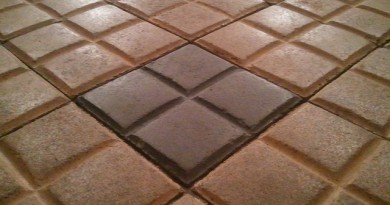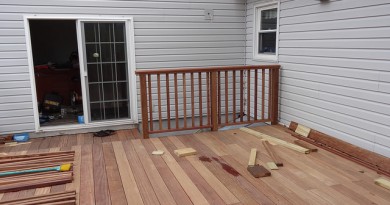How Much Does A Septic Tank Cost?
Septic tanks are part of an overall sewer system. The septic tank cost can be $1,500 to $5,000, depending on the material and size of the tank, installation process, and labor. Septic tanks are made out of concrete, steel, plastic, and fiberglass. Concrete tanks can be made to your needed specifications, or they can be purchased already made in standard sizes from $500 to $700. Fiberglass and plastic tanks are bought already made to fit a space. They are based on water capacity from 200 gallons to over 1500 gallons. Personal water use is what should be considered when deciding on a tank size. Most tanks have plastic outlets and rubber gaskets to fill or drain water. The overall sewer system is determined by state and local regulations. The septic tank price will be determined by the regulations set in place.
Concrete Septic Tank Cost
Pre-made concrete septic tanks are made out of strong, durable concrete to withstand decades of use. With septic tank prices from $500 to $700 for standard sizes, it takes heavy machinery such as a crane and manpower to install a concrete septic tank. Proper maintenance of a concrete tank means pumping the tank every three to five years to inspect for defects.
Plastic Septic Tank Prices
Plastic septic tanks have a large price difference, depending on where the tanks are purchased and the size of the tank needed to sustain all household needs. Plastic septic tanks cost anywhere from $500 to over $1,500. Plastic tanks are made to last for over twenty years with proper maintenance. Plastic tanks should be drained and inspected for cracks and leaks every three years.
Septic Tank Inspection Cost
Every individual that plans to buy a home should have the septic tank inspected as soon as possible for condition and any needed repairs. Sellers have to disclose if a property has a septic system, but they do not have to give details of the condition. For prospective homeowners it is important to identify any potential problems with the septic system that will need to be corrected before actually using the system. The cost of inspection can be from $300 to $600 for a visual inspection or a dye test from a professional inspector. This gives an idea of what the baffles look like, the size of the tank, and how the leach field is functioning.
Septic Tank Repair Cost
All major repairs and replacements must be approved by the city. A permit is required for septic tank repairs. The septic tank costs for a permit could be $250 to $500, depending on the area. There are several common issues that homeowners run into with septic systems. One issue is clogged pipes that lead into or out of the tank. The price to correct the clog is $50 to $250, depending on the seriousness of the clogged pipe. If a pipe cracks or cannot be freed of a clog, then it will need to be replaced. The cost of a pipe is $40 to $60 per foot. The baffle at each end of the tank prevents material from going to the outlet too quickly. If the baffle becomes rusty or damaged, then they need to be replaced to keep the septic tank working properly. Each replacement baffle could cost $200 to $400. For routine maintenance and inspection, septic tanks need to be pumped out periodically. The price of pumping out a tank can be $150 to $250, depending on the size of the tank. Proper maintenance of a septic system can reduce the lifetime repair costs of the system.
Septic Tank Replacement Cost
Septic tanks do need to be replaced when they can no longer function properly. The septic tank cost of a replacement tank is $1,500 to $2,500 before contractor fees. Homeowners should have a licensed septic plumber replace a tank if it becomes necessary. The total price of a replacement will include the price of the tank, the tools and labor needed to install the tank, and any additional materials that may be needed. The replacement septic tank price can exceed $10,000 if the damage is severe or the preparation and installation become a complicated process.
New Septic Tank Cost
New septic tank prices can vary due to the material of the tank. Plastic septic tank costs are between $600 for a 300-gallon pump and septic tank combination to $2,000 for a 150-gallon double compartment tank. Concrete tanks are priced at $350 to $400. Another option in septic tanks is ones made out of fiberglass; they cost $200 to $2,500. The size of the tank is the major deciding factor in the final price for the homeowner no matter what the material the tank is made out of.
Septic Tank Installation Cost
A certified septic contractor should install any septic tank. The contractor fees are $500 or more based on the project. The installation cost is comprised of the tank, pipes, baffles, and labor needed to put everything together. If a homeowner attempts to install a septic tank, it could lead to problems such as leaks and cracked pipes that will need to be repaired or replaced.
Septic Tank Maintenance Cost
Regular maintenance of a septic tank consists of pumping the tank, which costs $250 to $500. This is a routine duty that needs to be completed every three to five years. Proper maintenance of a tank can prevent costly repairs or a tank replacement. Leach fields should be kept free of large debris to prevent failure, and the grass around the area should be kept short to encourage sun exposure. Harsh chemicals should not be poured down the drain as they will break down the system, causing the need for immediate repairs.
Septic Tank Service Cost
Service for septic tanks costs hundreds of dollars if there is damage to any part of the system. Routine service for a system is necessary to prolong the life of a septic system and prevent serious damage to the tank or pipes.
Septic Tank Additives
There are two types of additives, chemical and biological. Chemical additives are known to be corrosive to tanks and dangerous to the environment, so they are no longer in use. Biological additives have not been found to cause harm to the environment. A lot of marketing has been done for the use of additives on a regular basis in septic systems. The natural process of a septic tank is to separate materials such as grease or debris and control water flow. A well-maintained system does not need any additives to work properly.
What Is A Septic Tank?
A septic tank is a holding area for waste material that goes through the water pipes. There are filters at each end of the tank called baffles that control what goes from the tank into the drainfield. Inside the tank, grease is separated to the top of the system, water in the middle, and solids at the bottom that turn into what is known as sludge. Due to the grease and sludge, the tank has to be pumped out so that it does not back up.
How A Septic Tank Works
A septic tank works off of natural bacteria created by the materials inside the tank. This is what causes the materials to separate properly and break down new material as it enters the tank. Water that flows from the house into the tank then flows to the drainfield where it is absorbed or evaporated.
Septic Tank Lids
Lids, also called risers, are airtight plastic devices set above ground to mark where a septic tank is located as well as provide an entry to the system when it is time to perform maintenance or repairs. Risers are durable, weather-resistant lids that can be exposed to the sun and mowed around without being damaged.
Septic Tank Sizes
Tank sizes can be as small as 200 gallons for home use or as large as 1500 gallons plus for commercial use. The number of appliances, bathrooms, and people in a home will decide what size tank a homeowner needs. The tank has to be capable of managing all household water usage without failing.
- 704SHARES






